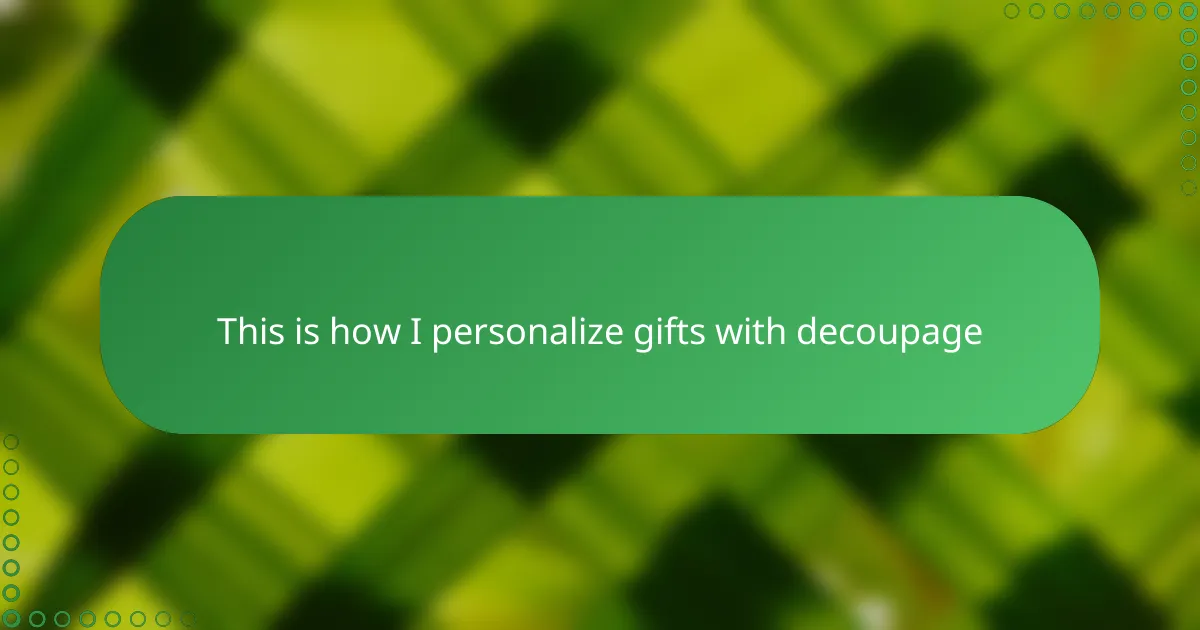Key takeaways
- Handmade paper crafts foster a personal connection, allowing for creative expression through texture and techniques.
- Decoupage involves layering paper cutouts with a focus on precision and patience, enhancing the charm of each piece.
- Using quality materials, including specific decoupage glue and lightweight papers, is crucial for achieving polished, durable results.
- Adding personal touches, like handwritten notes and themed collections, elevates the significance of personalized gifts.

Introduction to handmade paper crafts
Handmade paper crafts have always held a special place in my creative journey. The texture, weight, and subtle imperfections of hand-crafted paper make each piece feel uniquely alive. Have you ever noticed how working with handmade paper instantly connects you to a slower, more thoughtful way of creating?
There’s something deeply personal about shaping something tangible with your own hands, especially when the medium itself carries its own story. For me, paper isn’t just a canvas; it’s a companion in crafting memories. I often find myself pausing to appreciate its delicate fibers before even starting a project.
What I love most is how handmade paper crafts invite endless possibilities. Whether you’re a seasoned artist or a curious beginner, there’s a quiet magic in combining textures, colors, and techniques that transforms simple materials into heartfelt expressions. Have you ever tried losing yourself in such mindful creativity?

Understanding decoupage techniques
Decoupage, in its essence, is all about layering paper cutouts onto a surface and sealing them with varnish or glue. I remember my first attempt—carefully smoothing out wrinkles, only to realize patience was just as important as precision. Have you ever tried layering something delicate and felt time slow down as you worked?
What intrigues me most about decoupage is the versatility of techniques you can explore. From using simple glue to experimenting with different finishes, each step invites a new discovery. This process taught me that imperfections can enhance the charm, making every piece truly one-of-a-kind.
Understanding the basics of decoupage transforms how you approach your crafts. When I mastered how to blend edges seamlessly and protect the designs, I felt a new level of confidence. Have you noticed how a little technique can turn a humble paper gift into something extraordinary?

Essential materials for decoupage gifts
When I started personalizing gifts with decoupage, I quickly realized that having the right materials made all the difference. Essential to the process are good-quality decoupage glue and varnish; these not only help the paper stick firmly but also give the finished gift a smooth, protective finish. Have you ever tried using regular glue only to find your design peeling off days later? That’s why I always reach for products made specifically for decoupage.
Of course, paper selection plays a starring role. I prefer using lightweight decorative napkins or thin handmade paper because they conform beautifully to curves and surfaces without tearing. It’s amazing how the texture and pattern of the paper can completely change the vibe of a gift. Do you find yourself gravitating towards certain motifs or colors when choosing paper? I do, and it often reflects the personality of the person I’m gifting to.
Lastly, don’t forget tools like soft brushes and scissors—they might sound basic, but they’re crucial for precision and smooth application. I remember the frustration of using stiff brushes that left streaks, and since then, I always pick soft-bristled ones for a flawless finish. These little details might seem minor, but they truly elevate the quality of your decoupage gifts. Have you experienced how the right brush can make blending edges so much easier? It’s a small thing that reminds me every time why good tools matter.
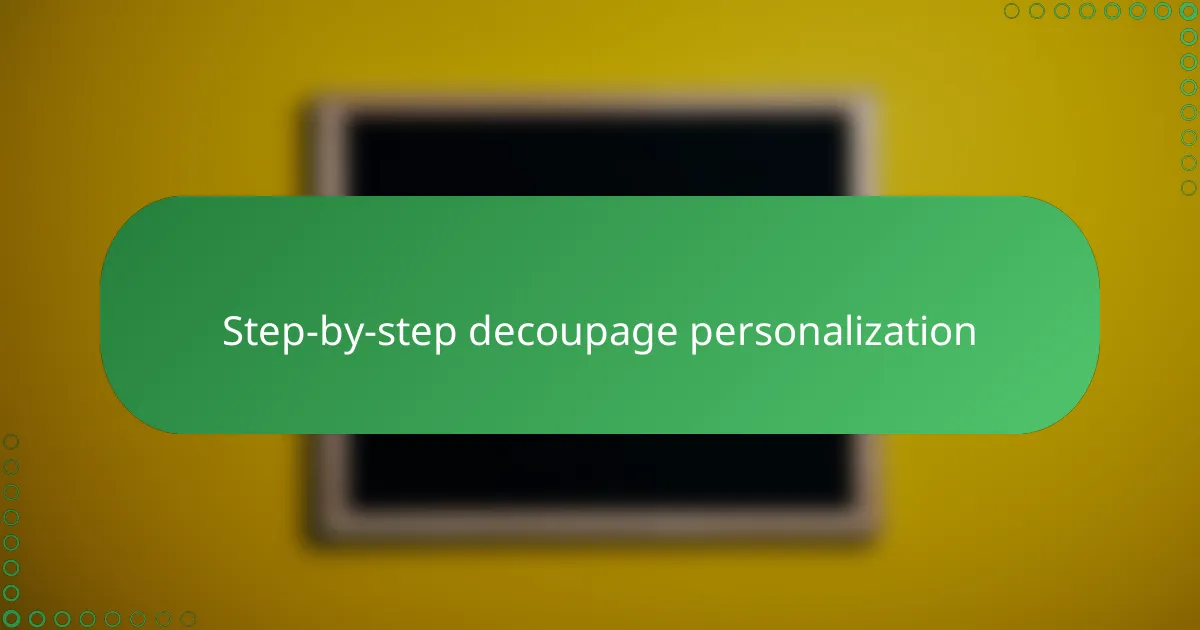
Step-by-step decoupage personalization
Starting with a clean, well-prepared surface is my first rule when personalizing gifts with decoupage. I usually give the item a light sanding or wipe it down to ensure the paper adheres smoothly—have you ever noticed how even a tiny speck can cause bubbles or wrinkles? Taking this extra step feels like setting the stage for a flawless finish.
Next comes the exciting part: arranging the paper cutouts. I like to play around with placement before gluing anything down, almost like composing a little story on the gift’s surface. Sometimes, I even overlap pieces and trim edges carefully to make the design flow organically. Do you also find yourself getting lost in these little creative decisions? It’s one of my favorite moments in the process.
Once I’m happy with the layout, I brush on a thin layer of decoupage glue, gently smoothing down the paper to avoid wrinkles or air pockets. Sealing it with multiple varnish layers afterward not only protects the design but gives the gift a beautiful sheen that feels so satisfying. Over time, I’ve learned that patience here truly pays off—waiting for each layer to dry before the next step really elevates the final result. Have you tried layering varnish yet? It’s where the real magic happens.
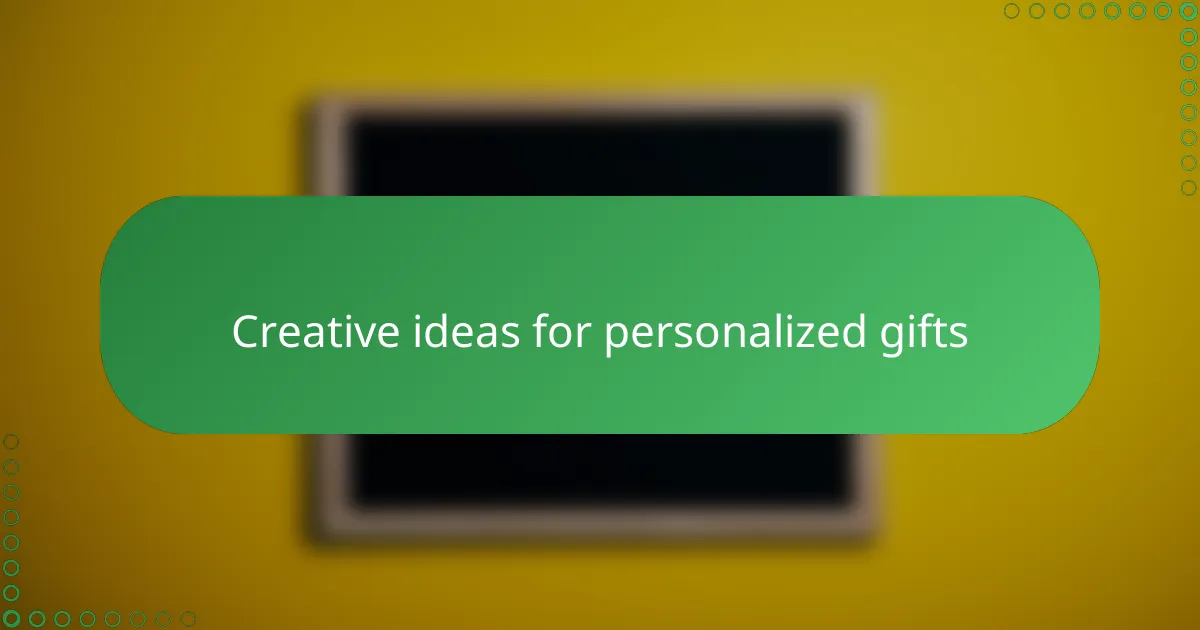
Creative ideas for personalized gifts
When I think about creative ideas for personalized gifts, decoupage instantly comes to mind as such a playful way to express personality. I’ve loved transforming ordinary items—like wooden boxes or glass jars—into heartfelt keepsakes by layering paper that reflects the recipient’s passions or memories. Have you ever noticed how a simple pattern or image can capture a story that feels both intimate and unique?
Sometimes, I like to mix in handwritten notes or meaningful phrases within the paper layers, adding an extra touch that’s impossible to buy in a store. It’s exciting to see how these little details can turn a gift from something generic into a cherished treasure. Have you tried blending text and imagery in your decoupage designs? It often surprises me how much warmth a few thoughtful words can bring.
Another idea I always come back to is creating themed collections—like a set of coasters or bookmarks, each featuring a different aspect of the person’s interests. This approach lets me get creative with both color and composition while making sure the gift feels cohesive yet personal. Do you enjoy crafting multi-piece gifts, or do you prefer single, standout items? I find both equally rewarding depending on the occasion.
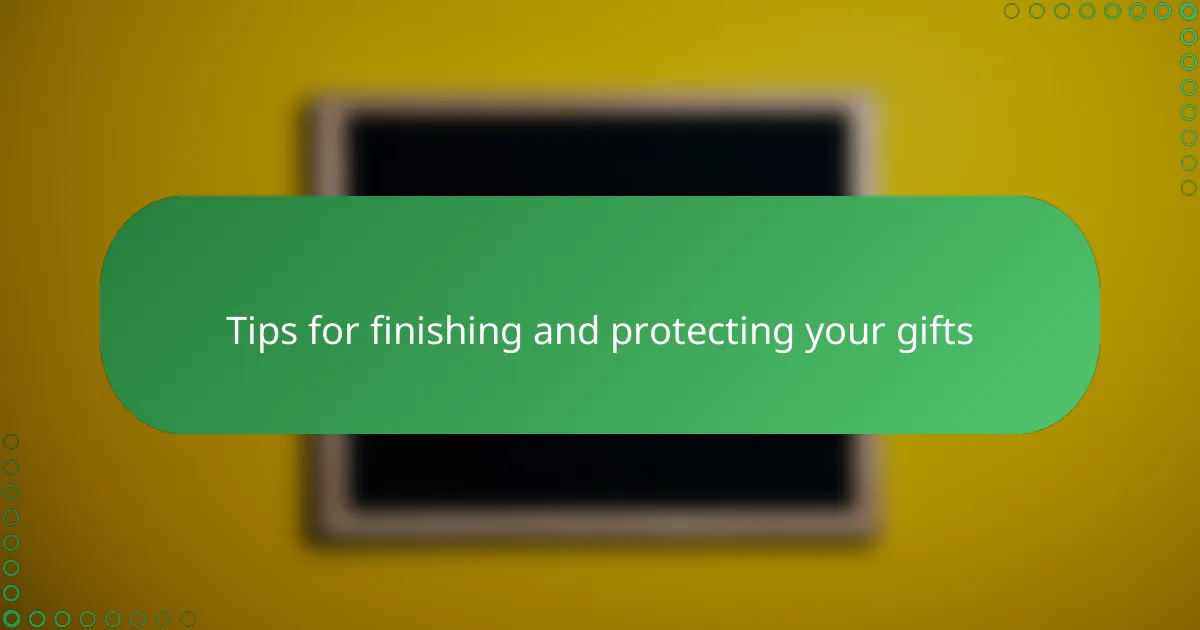
Tips for finishing and protecting your gifts
One of the best ways I’ve found to protect my decoupage gifts is applying several thin layers of varnish rather than one thick coat. Have you ever rushed that step only to end up with uneven spots or sticky patches? Taking time to let each layer dry not only seals the paper beautifully but also gives the gift a polished, professional look that lasts.
I also learned early on that the choice of finish matters—a matte varnish can keep the rustic charm of handmade paper, while a glossy one amps up the vibrancy. Sometimes, I experiment with a satin finish to strike a nice balance. What kind of finish do you think suits your style or the recipient’s taste best?
To really guard against scratches or moisture, I sometimes add a thin layer of clear acrylic spray as a final step. It’s quick and adds extra durability without dulling the design. Have you noticed how a little extra protection can make a handmade gift feel more treasured and long-lasting? It’s those finishing touches that make me proud to give something truly special.
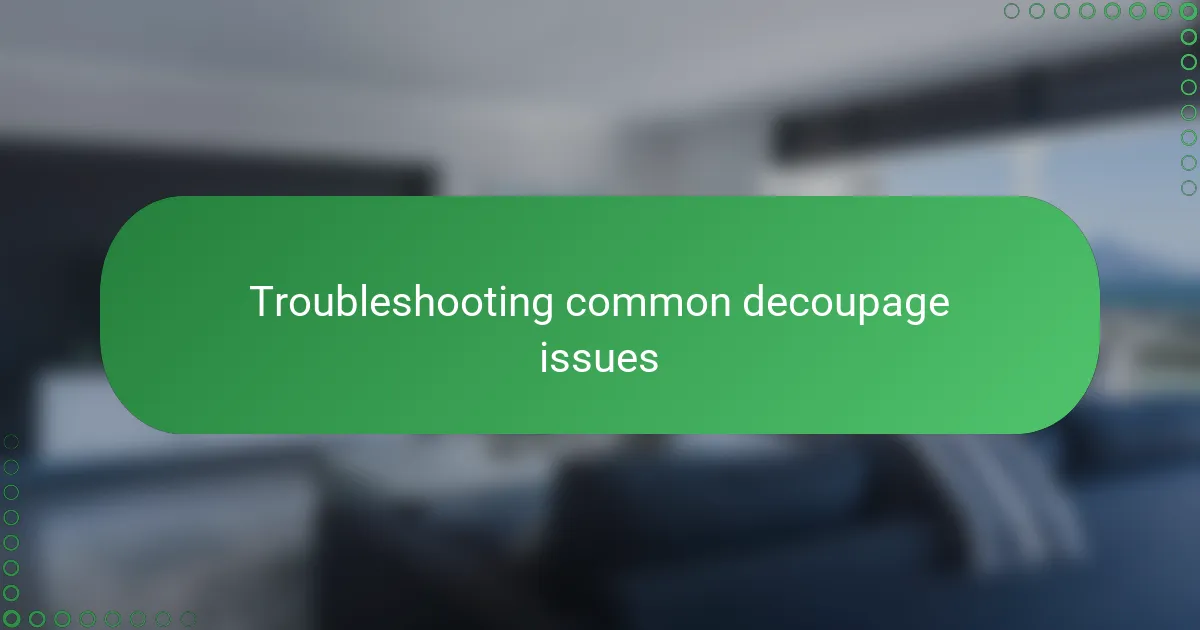
Troubleshooting common decoupage issues
One issue I often faced early on was paper wrinkling or bubbling during application. I found that applying glue too thickly caused this problem—light, even layers of decoupage glue, along with careful smoothing, really help avoid those frustrating imperfections. Have you ever felt that disappointment when your carefully cut paper suddenly puckers? It’s such a learning curve, but mastering this step makes the final piece so much more satisfying.
Another challenge I bumped into was edges lifting after drying. My trick became sealing edges thoroughly with varnish and using a soft brush to press them down gently before the glue dried completely. Patience is key here; rushing can undo all your hard work. Do you sometimes get tempted to skip waiting times? I’ve learned it’s worth every extra minute to get a clean, long-lasting finish.
Lastly, I’ve seen colors fade or become blotchy when the wrong glue or finish was used. Using decoupage-specific products designed for paper crafts ensures colors stay vibrant and protected. It’s like giving your gift a little armor that keeps its charm intact. Have you ever regretted using a quick-fix glue that didn’t stand the test of time? It’s a lesson that good materials really make all the difference.
